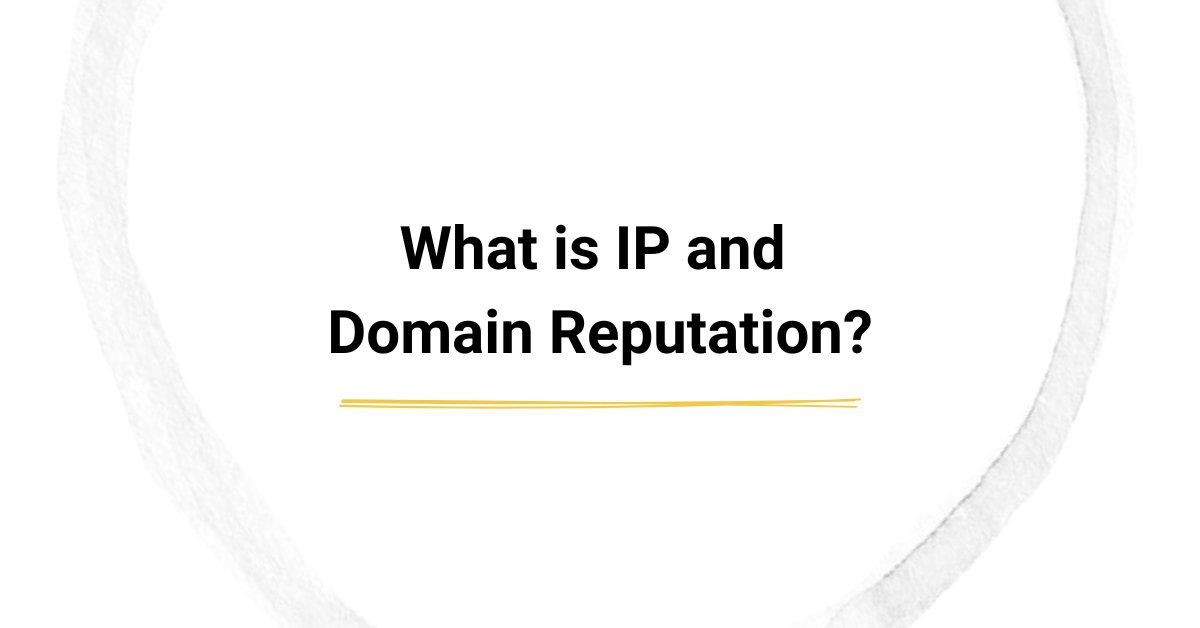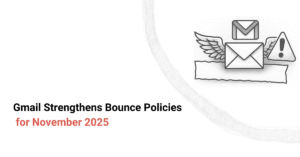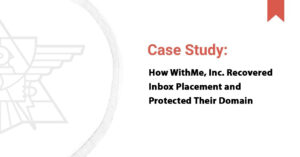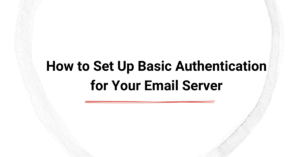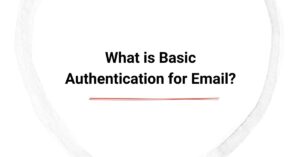In today's digital age, email marketing remains a key communication tool for businesses of all sizes. Understanding the entire email ecosystem, including senders, recipients, ISPs, and spam filters — is essential for successful deliverability. Whether you want to promote new products or services, nurture leads, or keep customers informed of upcoming events and promotions, email is one of the most effective and reliable marketing channels. However, email deliverability remains a key challenge for marketers as stringent anti-spam policies employed by mailbox providers require following all the best practices.
From improving sender score and email reputation to ensuring your emails don't trigger spam filters, the list is pretty extensive. In this blog, we delve into one of the most critical factors affecting email deliverability: IP and domain reputation. If you're struggling with email deliverability, our comprehensive deliverability solutions can help get your email marketing campaigns to recipients’ inboxes.
Summarizing the Key Points:
- IP and domain reputation is a measure of your trustworthiness and email sender reputation.
- A high sender score improves inbox placement, while a low sending reputation increases the chances of your emails landing in the recipient's spam folder.
- Key factors affecting email deliverability include engagement rates, bounce rates, spam complaints, and authentication protocols.
- Regularly monitoring your IP and domain reputation and following all email-sending best practices can help improve email deliverability.
What is IP Reputation?
IP reputation measures the trustworthiness of the email sender's IP address. Think of it as the credit score of email servers. If a mail server consistently sends emails as a legitimate sender that recipients engage with, it improves the overall reputation of the IP address over time. Email service providers (ESPs) such as Google, Outlook, and Yahoo verify if your IP address ranks high on the trust scale before directing your email to the recipient's inbox.
A high sender score improves your chances of email delivery, while a poor IP reputation can send your emails to the recipient's spam folder. Imagine two email senders. One sends personalized messages as part of targeted email campaigns, while the other sends bulk emails to unverified contact lists.
The first sender is more likely to maintain a high sender reputation, leading to better inbox placement, while the second has a higher chance of being blacklisted by internet service providers (ISPs) and ESPs.
What is Domain Reputation?
Domain reputation measures the trustworthiness of the domain name used in email marketing campaigns. Unlike IP reputation, which is tied to the IP address of the server, domain reputation is linked to your brand's online persona. Hence, domain reputation doesn't just affect email deliverability but also how the target audience and ISPs perceive your brand.
A positive domain reputation improves email deliverability and fosters greater trust among users and major providers (ISPs and ESPs). Conversely, a domain marred with spam reports and inconsistent practices is often penalized, leading to lower deliverability rates.
Therefore, the more consistently you send authenticated emails, the better your reputation will be. If your marketing emails fail authentication checks (SPF, DKIM, and DMARC) or trigger spam traps, your domain reputation will suffer.
How IP and Domain Reputation Affect Email Deliverability
There is a lot more to email deliverability than just hitting the "send" button. Let's walk you through the affects of domain and IP reputation on deliverability rates.
Impact on Inbox Placement
The primary goal of email marketing campaigns is deliverability. A strong domain and IP reputation can significantly improve your inbox placement rates. Mailbox providers evaluate the email sender's trustworthiness before directing emails to the recipient's inbox.
A strong IP and domain reputation sends a positive signal to the mail server, improving deliverability rates. You should also monitor feedback and performance metrics regularly to identify potential issues before they affect email deliverability.
Engagement Metrics and Trust
ISPs use certain engagement metrics to measure how recipients interact with your emails. Metrics like open rates, click-through rates, and reply rates signal trustworthiness and relevance. Therefore, the more engaged your audience is, the higher your domain and IP reputation will climb.
Building trust with ISPs starts with sending content that resonates with your audience. Personalization, segmentation, and relevance are the key factors that drive higher engagement. Removing inactive subscribers every three months and testing subject lines can help improve the performance of your email marketing campaigns.
Factors that Influence IP and Domain Reputation
Your domain and IP reputation are shaped by the choices you make while designing your email campaigns. Let's explore the primary factors that influence IP and domain reputation.
Sending Practices
Your sending practices can make or break your email reputation. Poor practices, such as sending emails to outdated lists or overloading recipients with frequent emails, can lead to spam complaints and bounced emails. If unchecked, this can harm your IP and domain reputation over time. For best results, you should follow these best practices:
- Use double opt-in to ensure the recipients actually want to hear from you.
- Segregate your audience based on demographics, interests, or past interactions to create personalized emails.
- Avoid sending too many emails in a short time frame, as it can overwhelm recipients and increase spam complaints.
Authentication Protocols
Authentication protocols like Sender Policy Framework (SPF), DomainKeys Identified Mail (DKIM), and Domain-based Message Authentication, Reporting, and Conformance (DMARC) help ISPs authenticate your emails as legitimate. These protocols add an extra layer of trust and security by ensuring your emails are coming from an authorized source.
Without proper authentication, ISPs might classify your emails as suspicious, even if you’re not a spammer. SPF verifies that your emails come from an authorized server, while DKIM ensures the content hasn’t been tampered with. DMARC, on the other hand, provides visibility into authentication results and prevents spoofing.
Here are three proven tips to help you authenticate your sending domain:
- Work with your IT team to implement SPF, DKIM, and DMARC protocols before launching your next email marketing campaign.
- Use tools like DMARC Analyzer or MxToolbox to monitor authentication results.
- Review DNS records regularly to ensure your email-sending domains are secure.
Bounce and Spam Complaints
Bounce and spam complaint rates directly impact your reputation. Spam complaints occur when recipients mark your emails as spam, signaling to ISPs that your emails are unwelcome. A high bounce rate indicates that you’re sending to invalid or outdated email addresses. Email bounces are categorized into soft and hard bounces. A soft bounce is a temporary email delivery failure, while a hard bounce is a permanent failure.
To avoid these issues, regularly clean your email lists and ensure addresses are accurate and active. Use tools like Alfred by Email Industries to validate email addresses before launching your next campaign. You can also simplify unsubscribing to minimize the chances of recipients marking your emails as spam.
Tools for Monitoring and Improving Reputation Issues
Maintaining a strong domain and IP reputation requires constant vigilance. Here are some of the most effective tools to help you streamline your efforts.
Checking IP Reputation
Monitoring your IP reputation is essential for identifying potential deliverability issues before they escalate. Use Google Postmaster Tools and Outlook's Smart Network Data Services to review sender reputation metrics like spam rate and delivery errors.
Check your sender score on platforms like Sender Score or Talos Intelligence. Scores above 80 are generally considered strong. You can also monitor blacklists on tools like Spamhaus or Barracuda Reputation System to ensure your IP isn’t flagged.
Checking Domain Reputation
A strong domain reputation signals to ISPs that your emails are safe and legitimate. Use MxToolbox to analyze your DNS records and ensure authentication protocols are correctly implemented. Check Google Postmaster Tools for domain-level metrics like authentication results and spam rates. You can monitor your domain’s blacklist status on platforms like BarracudaCentral or Spamhaus
Best Practices for Maintaining Strong IP and Domain Reputation
Building a strong reputation is an ongoing process that requires careful attention to email practices. Here are three best practices to help you maintain a strong domain and IP reputation.
Maintain Good Email List Hygiene
Maintaining a clean email list ensures your emails reach the target audience. You should remove inactive subscribers who haven’t engaged with your emails in six months or more. Use email validation tools like Alfred to remove invalid or misspelled addresses. You can also implement double opt-in to ensure that only interested users are added to your email list.
Follow Email Compliance Laws
Compliance with email laws like CAN-SPAM, GDPR, and CASL isn’t just a legal requirement but also critical for maintaining trust with ISPs and recipients. For best results, always include a clear unsubscribe link in your emails, preferably in the header. Only send marketing emails to recipients who have explicitly opted in. Remember to be transparent about how you collect and use recipient data.
Implement Authentication and Security
Authentication and security protocols are essential for protecting your domain from spoofing and phishing attacks. You should set up SPF to authorize servers that can send emails on your behalf and use DKIM to add a cryptographic signature to your emails, ensuring their integrity. Additionally, you can implement DMARC to provide visibility into authentication results and prevent domain spoofing.
Improve IP and Domain Reputation and Supercharge Your Email Campaigns with Expert Guidance
IP and domain reputation play a critical role in email deliverability. A strong email reputation ensures your email campaigns reach the audience, fostering better engagement and higher ROI for your campaigns. By following email sending best practices, you can protect and enhance your reputation. Ready to improve your sender reputation and maximize your email marketing success? Book a discovery call today for a free assessment of your IP and domain reputation.

